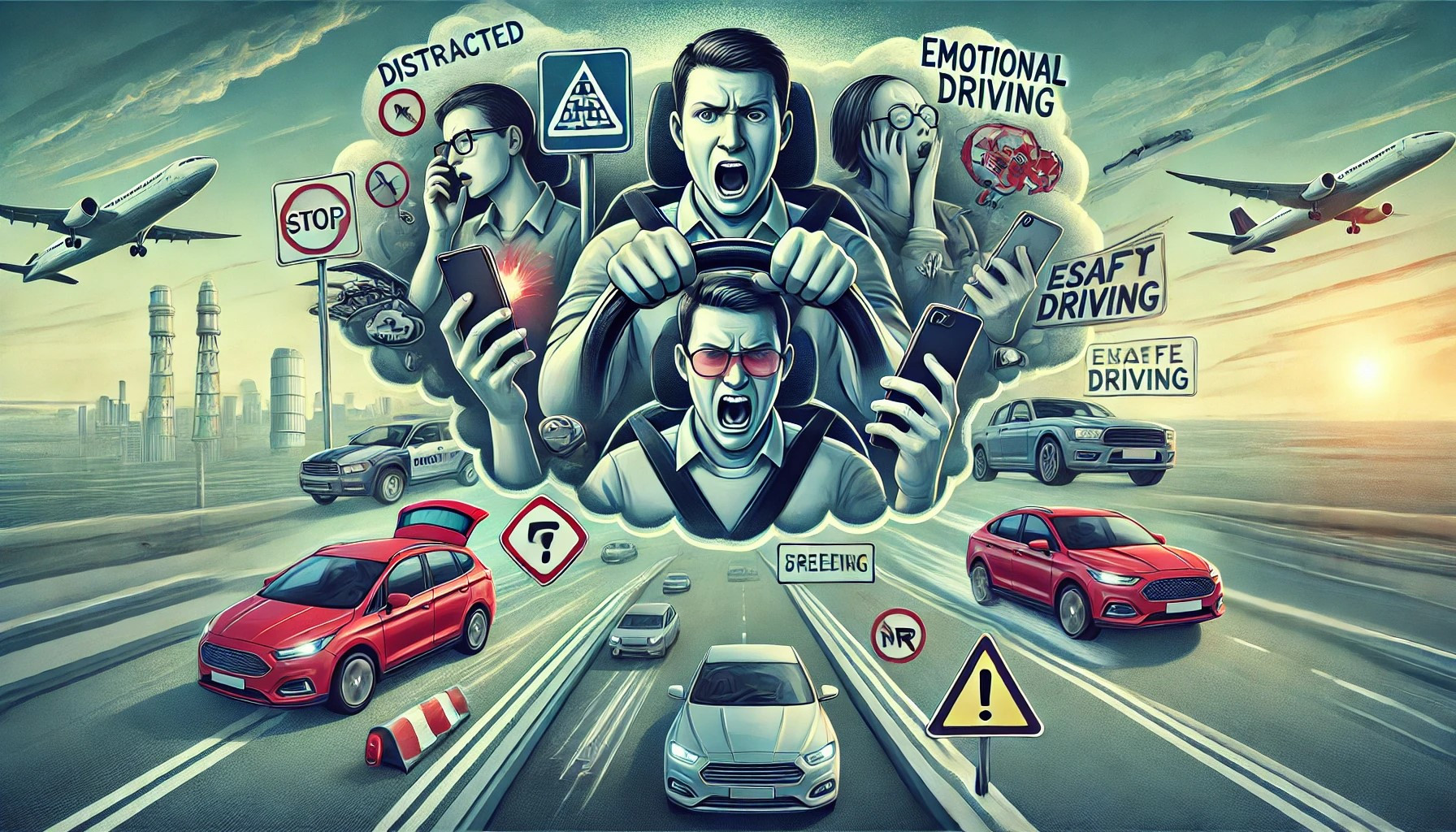How Much Do Distraction, Emotion, and Other Unsafe Behaviors Increase Driving Risk?
Driving is a fundamental skill that grants independence and mobility. However, it is also an activity that demands full attention and responsible behavior to ensure road safety. Distractions, emotional states, and other unsafe behaviors significantly elevate the risk of accidents, making it essential to address these issues comprehensively in drivers ed programs. This blog explores how these factors impact driving safety and outlines steps to mitigate these risks.
The Impact of Distractions on Driving
Distractions are a primary cause of road accidents. Activities like texting, adjusting the radio, eating, or conversing with passengers can divert a driver’s focus from the road, leading to dangerous consequences. According to the National Highway Traffic Safety Administration (NHTSA), distracted driving claimed 3,142 lives in 2019 alone.
Types of Distractions:
Visual Distractions:
Taking your eyes off the road, such as looking at your phone or a GPS device.
Manual Distractions:
Taking your hands off the wheel, like eating or adjusting the car’s controls.
Cognitive Distractions:
Taking your mind off driving, such as daydreaming or engaging in a heated conversation.
At Get Drivers Ed, we emphasize the importance of staying focused and avoiding distractions. Our program includes practical tips and strategies to help new drivers recognize and manage potential distractions effectively.
The Role of Emotions in Driving
Emotions significantly influence driving behavior. Stress, anger, sadness, and even excitement can impair a driver’s ability to make sound decisions. Emotional driving can lead to aggressive behaviors, such as speeding, tailgating, and road rage, all of which are hazardous and increase the likelihood of accidents.
How Emotions Affect Driving:
Anger and Aggression: Anger can lead to irrational decisions, unnecessary risks, and aggressive driving.
Stress and Anxiety: High stress levels can reduce concentration and reaction times to changing road conditions.
Sadness and Depression: These emotions can lead to a lack of motivation and attention, slowing reaction times and decision-making processes.
At Get Drivers Ed, our program covers the psychological aspects of driving. We teach students to recognize their emotional states and implement coping mechanisms to maintain calm and control while driving.
Other Unsafe Behaviors
In addition to distractions and emotions, several other unsafe behaviors increase driving risk:
Speeding: Driving over the speed limit reduces the driver’s ability to react to sudden changes and increases the severity of collisions.
Tailgating: Following another vehicle too closely reduces the time a driver has to react, leading to rear-end collisions.
Driving Under the Influence: Alcohol and drugs impair judgment, reaction times, and coordination, significantly increasing the risk of accidents.
Our drivers ed course at Get Drivers Ed provides comprehensive education on the dangers of these behaviors and the importance of adhering to traffic laws. We incorporate real-life scenarios and simulations to help students understand the consequences of unsafe driving practices.
Mitigating Risks Through Drivers Ed
Education is key to reducing the risks associated with distracted, emotional, and unsafe driving behaviors. Drivers ed programs like Get Drivers Ed play a vital role in preparing new drivers to handle the complexities of driving responsibly.
Key Elements of Effective Drivers Ed Programs:
Awareness and Education: Teaching students about the different types of distractions, how emotions affect driving, and the dangers of unsafe behaviors.
Practical Strategies: Providing practical tips and strategies to manage distractions, control emotions, and adopt safe driving habits.
Real-Life Scenarios: Using simulations and real-life scenarios to demonstrate the consequences of risky behaviors and the importance of making safe driving decisions.
Continuous Learning: Encouraging continuous learning and self-improvement to stay updated with the latest driving safety practices and regulations.
Conclusion
Understanding how distractions, emotions, and other unsafe behaviors increase driving risk is crucial for becoming a responsible and safe driver. At Get Drivers Ed, we are committed to providing comprehensive drivers ed courses that equip new drivers with the knowledge and skills needed to navigate the roads safely. By focusing on these critical aspects of driving, we aim to reduce the number of accidents and create safer roads for everyone.
If you or someone you know is ready to start their driving journey, enroll in our drivers ed course today at Get Drivers Ed. Drive with confidence and learn with the best!
Additional Steps for Ensuring Safe Driving
**1. Develop a Driving Routine:
Having a set routine can help minimize distractions. For example, adjust your mirrors, set your GPS, and secure your seatbelt before you start driving.
**2. Mindfulness Techniques:
Practicing mindfulness can help you stay calm and focused. Techniques such as deep breathing or listening to soothing music can keep stress at bay while driving.
**3. Regular Breaks:
On long drives, take regular breaks to rest. Fatigue is a common cause of distracted and unsafe driving. A short break every two hours can significantly improve your concentration and reaction times.
**4. Vehicle Maintenance:
Ensure your vehicle is in good condition. Regular maintenance checks for brakes, tires, lights, and other critical components can prevent unexpected issues that might divert your attention while driving.
By integrating these strategies into your driving habits, you can further reduce risks and enhance your safety on the road. At Get Drivers Ed, our goal is to support you in every step of your driving journey, ensuring you become a skilled, confident, and safe driver.

